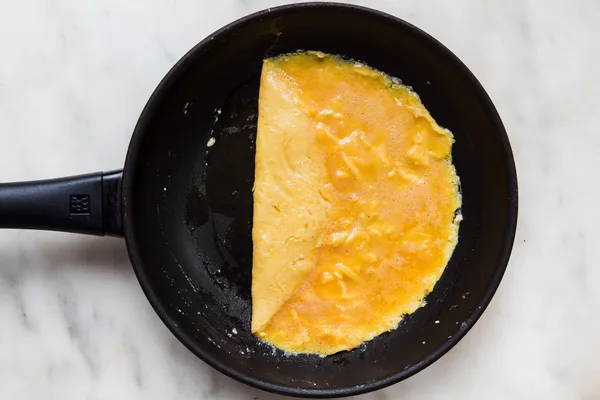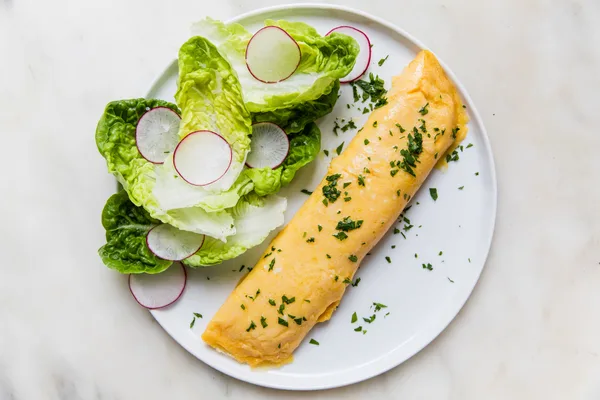
3 Eggs & A Pinch of Technique: Une Omelette Parfaite!
Today we’re tackling one of the most iconic recipes in the food and chef world—the classic, perfect French omelette. French omelettes are known for their challenging simplicity—in fact, they’re thought of in certain chef circles as the ultimate test of culinary technique. Our classic French omelette recipe is simple, yes, but the simplicity really is a bit deceptive, so take a deep breath before you begin. This recipe is all about technique, but it’s not a test! You can do this. You’ll want to have the right tools, you’ll want to have the best ingredients, and you’ll want to read the recipe all the way through before you begin (which, BTW, is always a good idea). And honestly, practice makes perfect. And what does a “perfect” French omelette look like? Well, it’s a thing of beauty. Pale yellow and smooth on the outside, tender on the inside with a texture like the best, creamiest, most softly scrambled eggs. And best of all, your beautiful omelette will be just at home on the dinner table as it is at breakfast—maybe even more so! An omelette, a green salad and a glass of wine is one of the most truly elegant meals we know of.

What Is a French Omelette?
A classic French omelette is about technique above all. It’s a celebration of all that an egg can be. It’s a humble representation of everything that makes French cuisine so wonderful—by applying focused, thoughtful technique to the simplest ingredients, greatness is achieved! OK, enough hyperbole—really, what is a French omelette, exactly? Well, a French omelette is basically just eggs. At its most basic, it can be made with simply 2 or 3 eggs and a nonstick pan. We like it better with butter, salt and fresh herbs, though, which is also classic. Cooked quickly with great ingredients and some major focus, a perfect French omelette should be soft and tender, moist in the middle and not browned at all.*
4 Simple Ingredients
Are all you’ll need! So, make them the best you can, OK? When a recipe calls for just a few ingredients like this, it’s more important than ever to get really good ones—great, fresh eggs, good butter, and fresh herbs. The lovely thing about the herbs is that you can use what looks good or what happens to be growing well in your kitchen or herb garden. Chives, parsley, tarragon and chervil are the most classic herbs to use in (or on) a French omelette, and you can mix-and-match them, or only use one. If all that looks good and fresh at the store is regular old parsley, that’s great! Use that. If it’s summertime and your tarragon is growing like mad, go nuts with that! Just follow your nose and use the best.
- Eggs
- Butter
- Salt
- Fresh herbs

How To Make a French Omelette
OK, deep breath. Even though a classic French omelette is a classic culinary test for aspiring chefs, it might be helpful to remember that you, however, are not a chef taking a test (thank goodness). You’re just a hungry person who’d like to make the best French omelette ever! The only person you need to please is yourself, and with a bit of attention and a few great ingredients, you can absolutely turn out a lovely omelette. Here’s are our best tips and tricks for making the perfect French omelette:
- Mixing the eggs thoroughly is very important. You really want to whisk the yolks into the whites completely, until you cannot see any strands of white remaining at all.
- Nonstick is non-negotiable! You really need a good nonstick pan to make this recipe work. You just do!
- You may see some French omelette recipes that call for you to work completely over higher heat, but we’re having you start over low heat because it’s just easier! Remember, it’s not a test—it’s a yummy meal.
- Just like with scrambled eggs, the doneness of a French omelette is a question (somewhat) of personal preference, that’s why our cooking times are given as ranges. Keep an eye on the eggs and trust your gut as much as you can. You want the outside of the omelette done (but not brown) and the inside should be soft-scrambled and creamy.